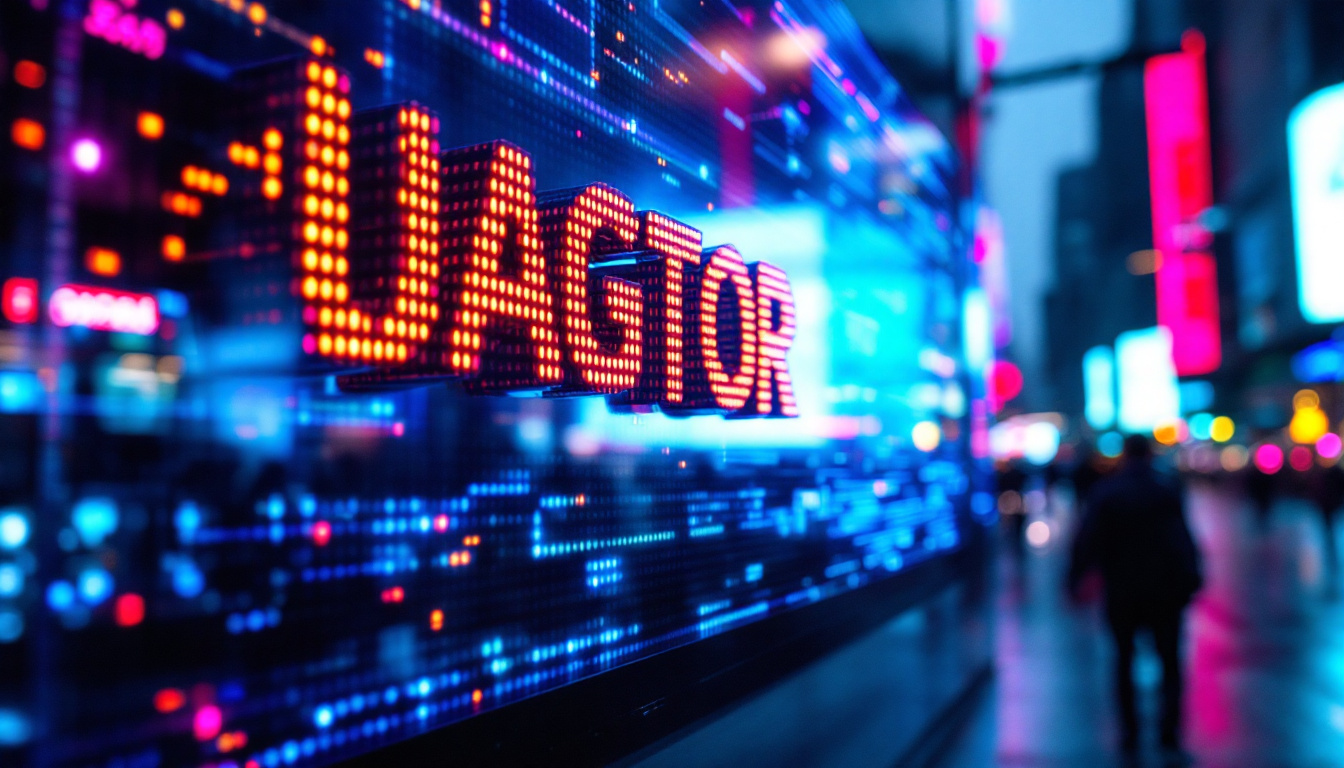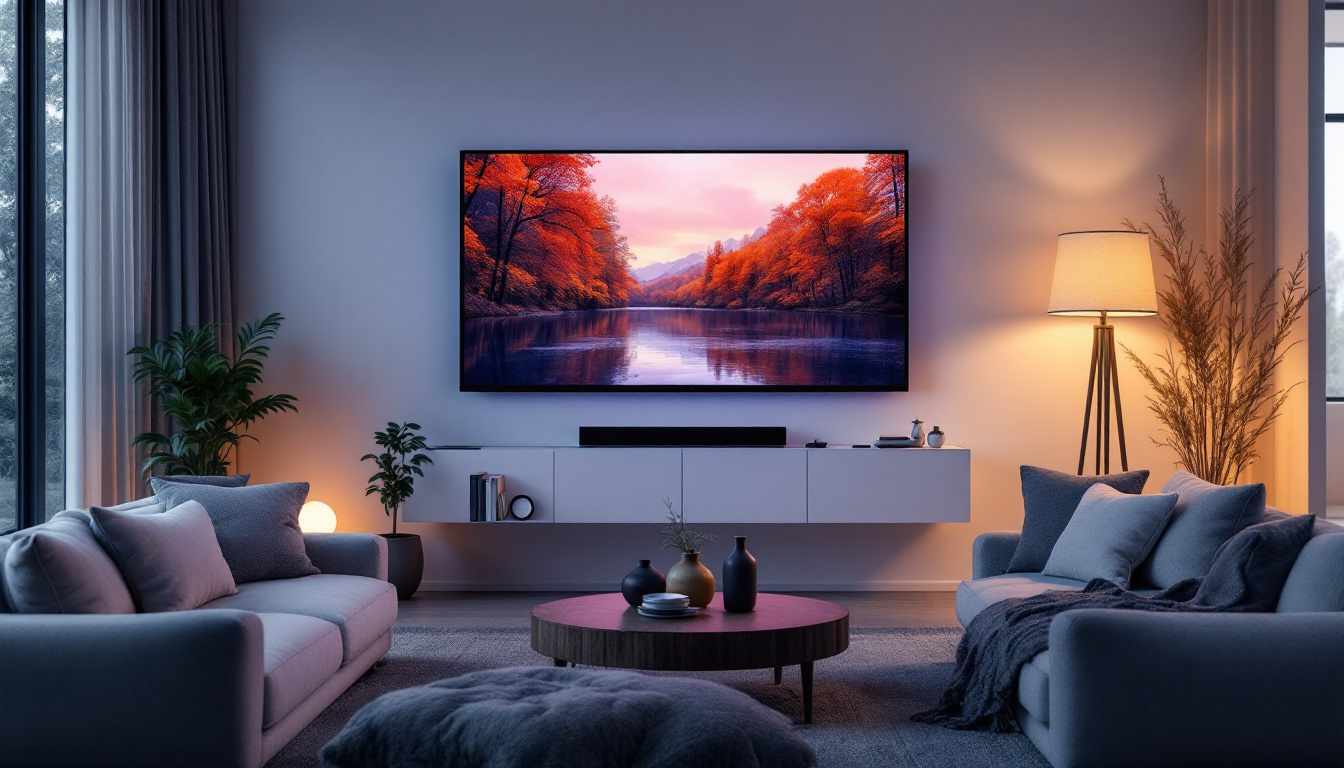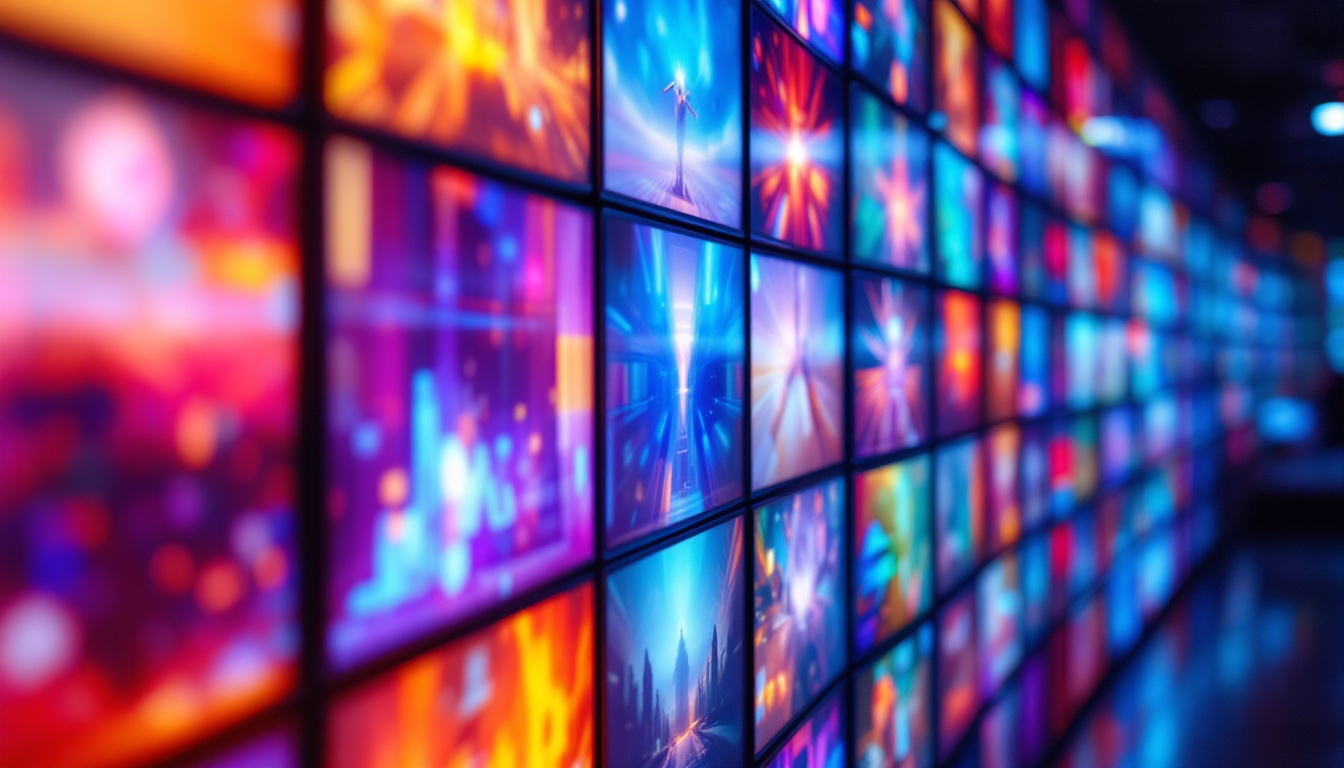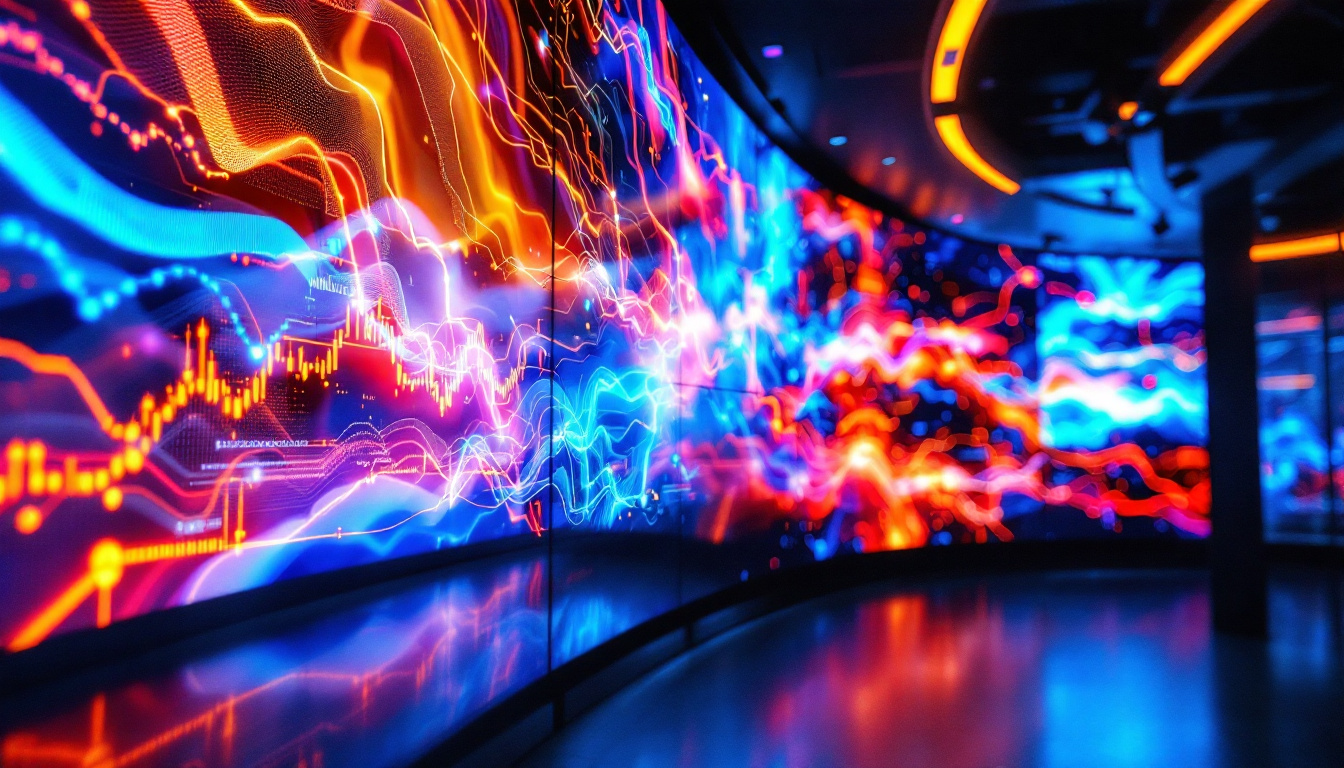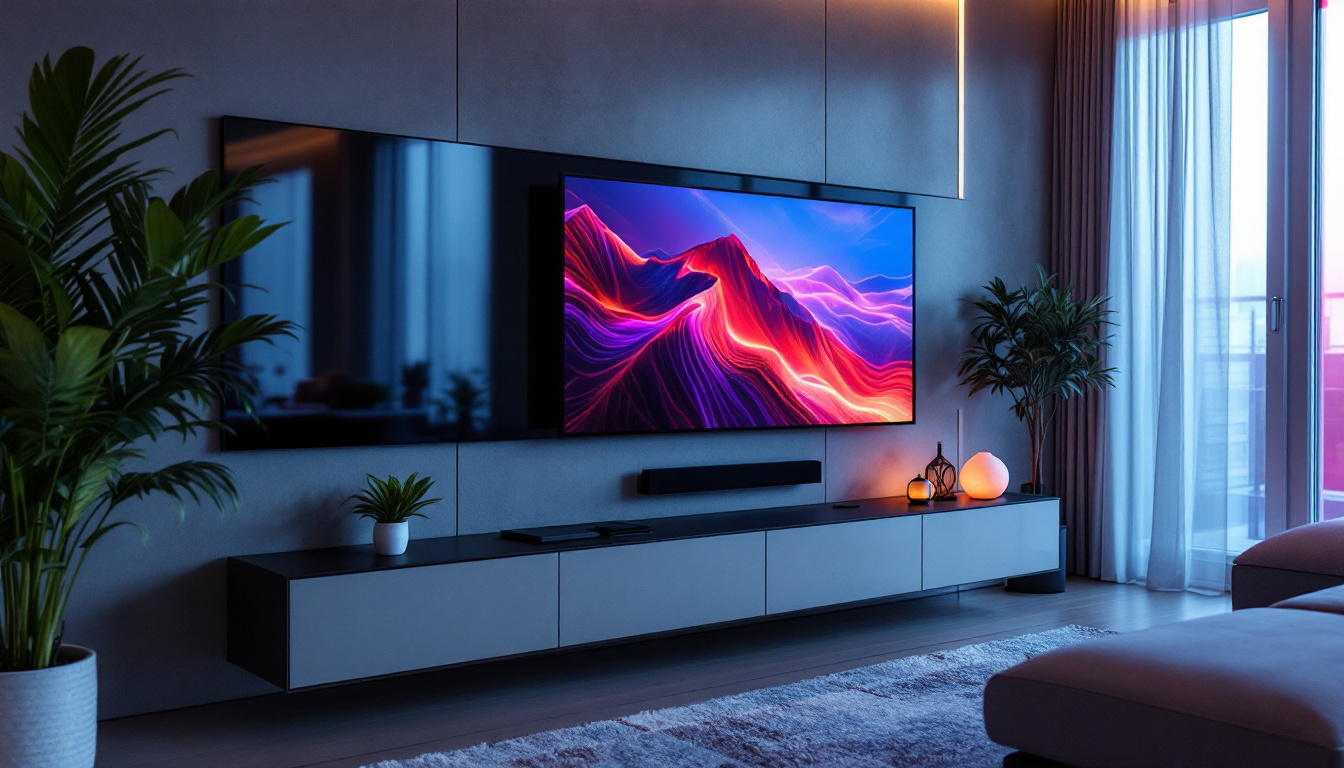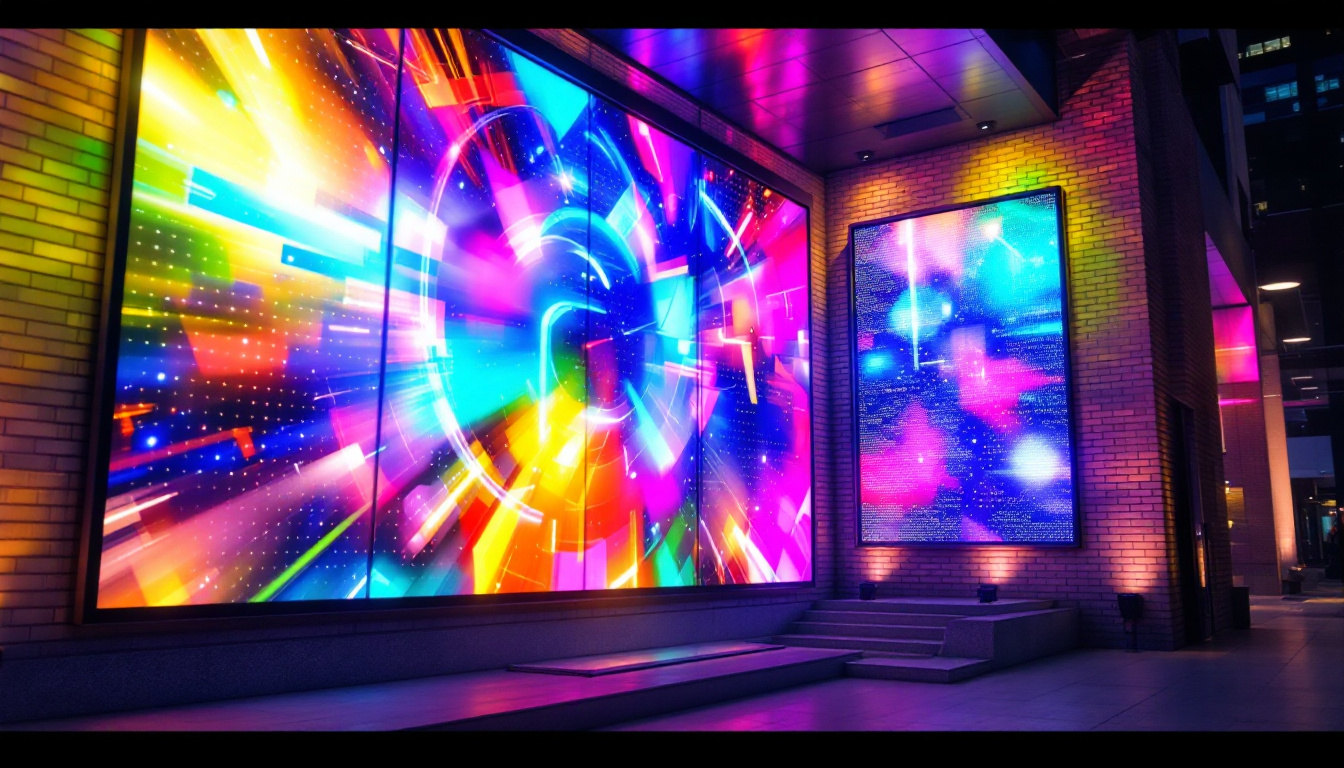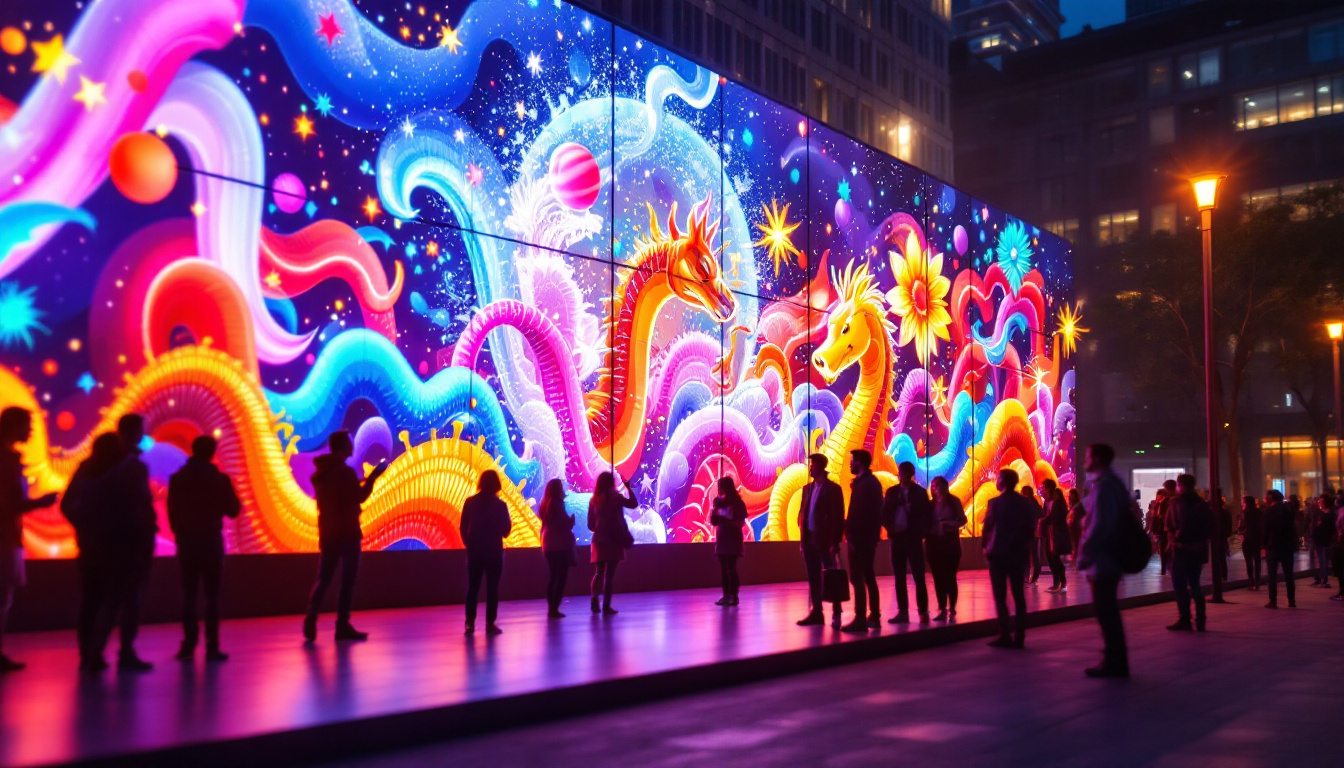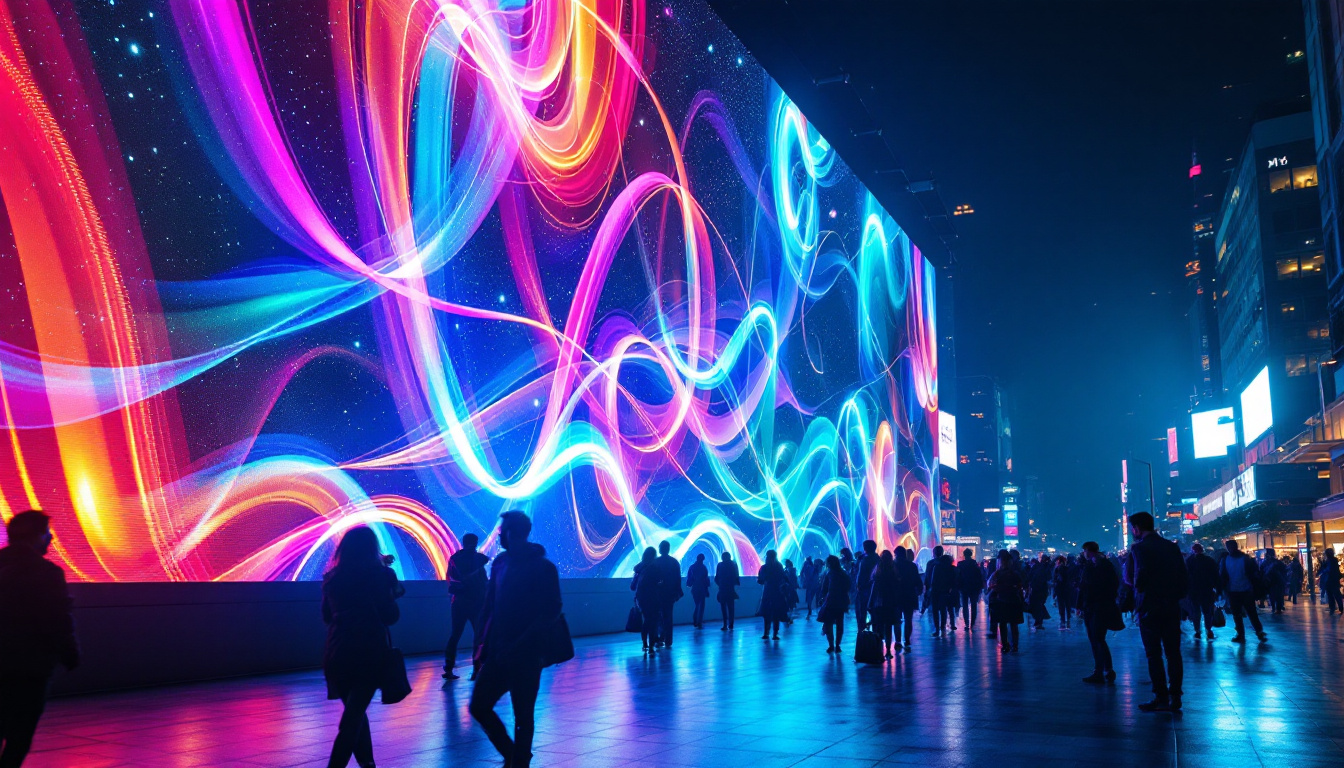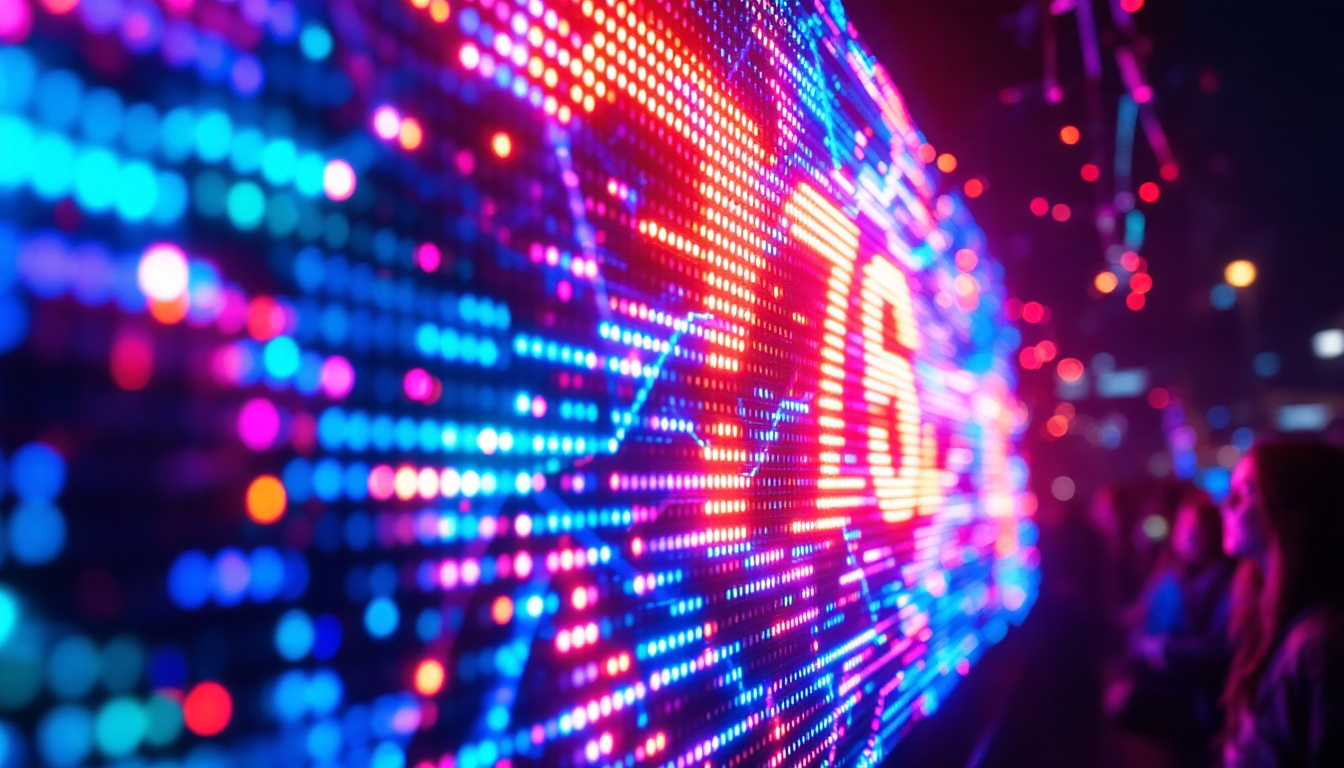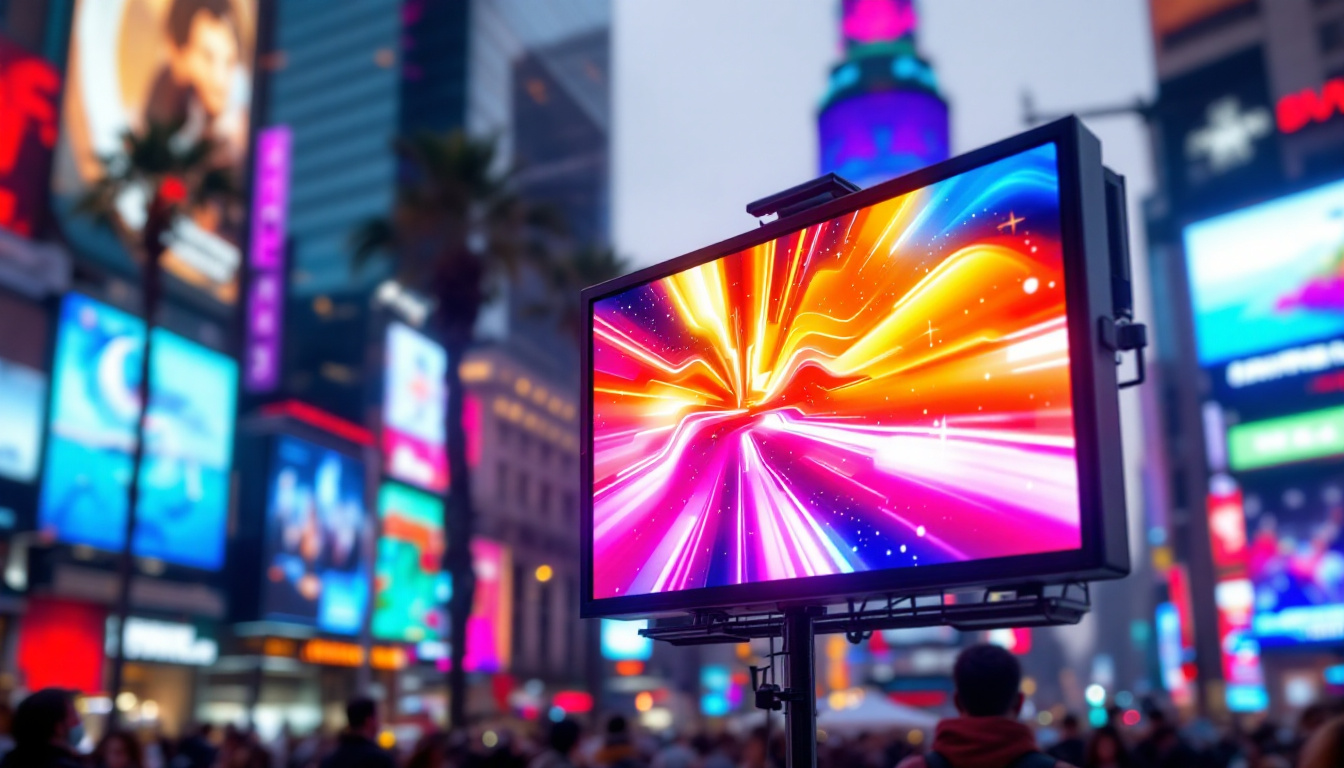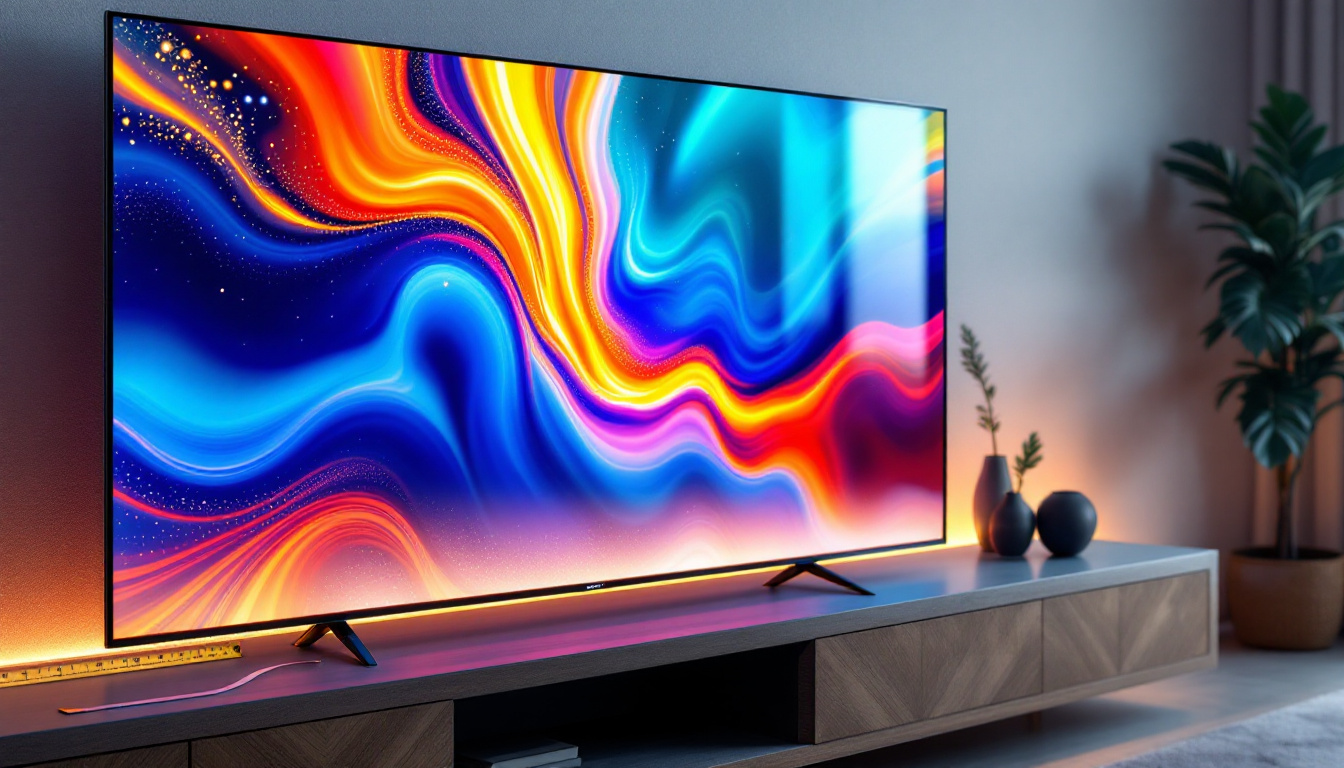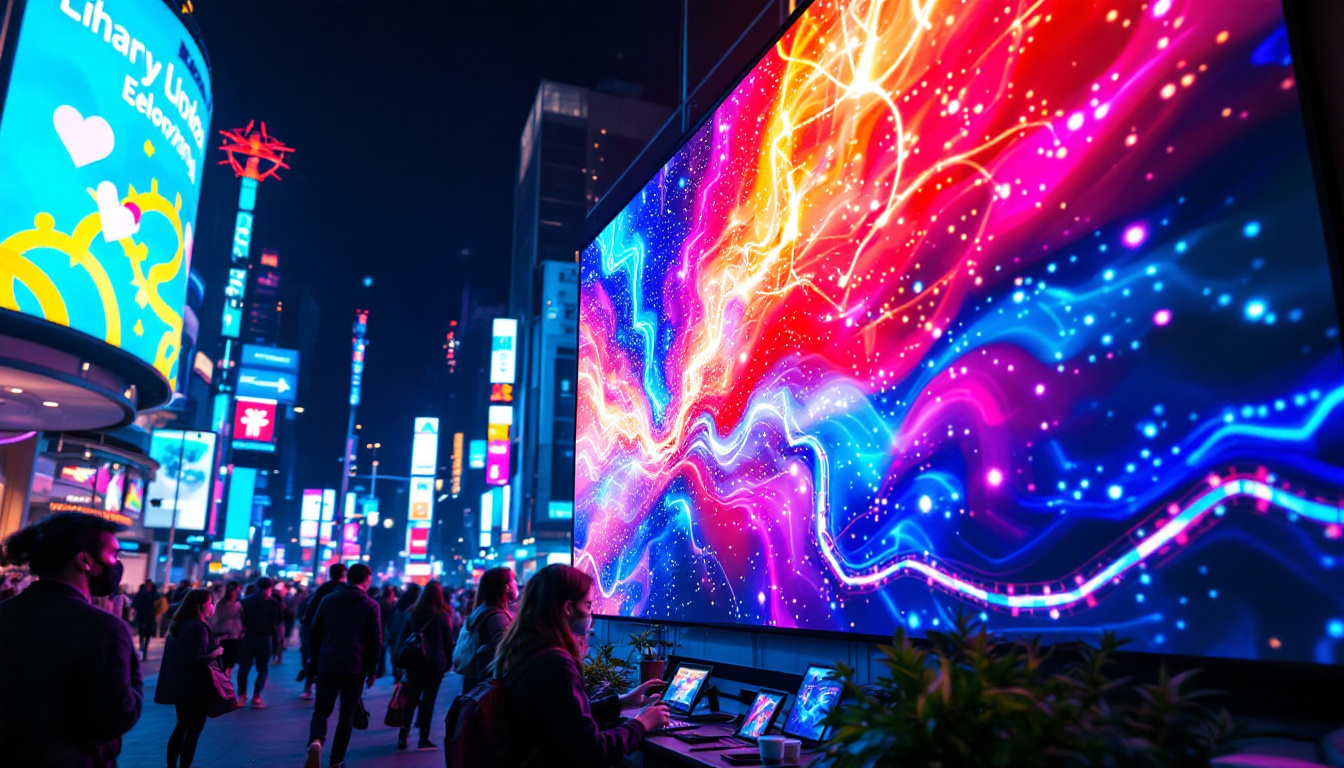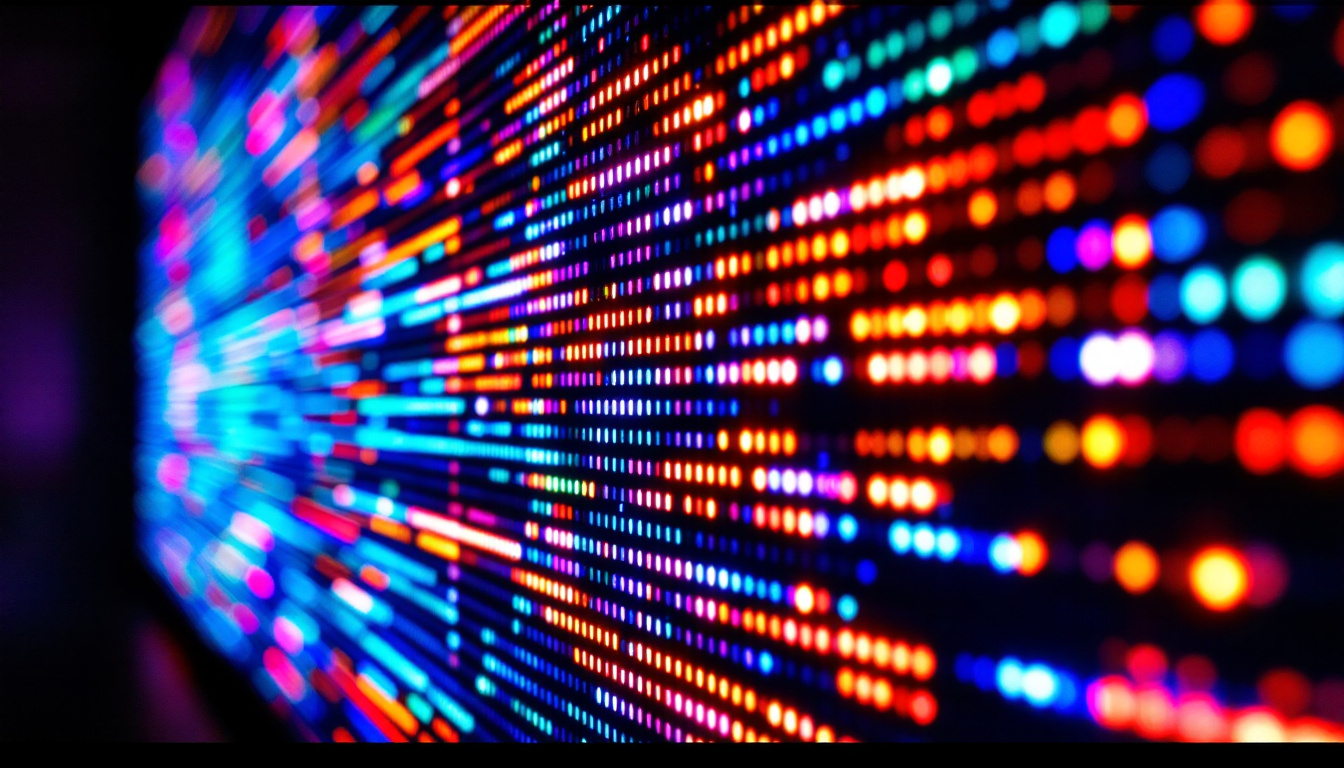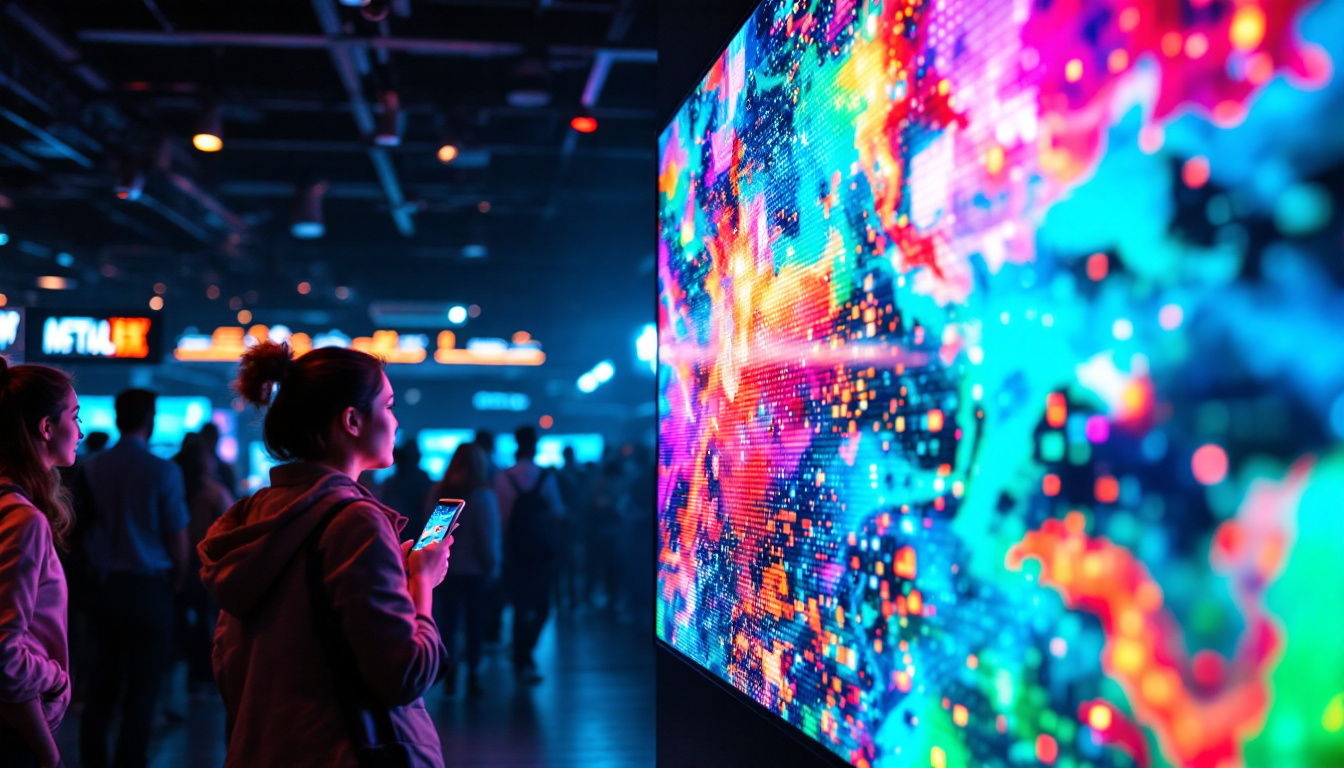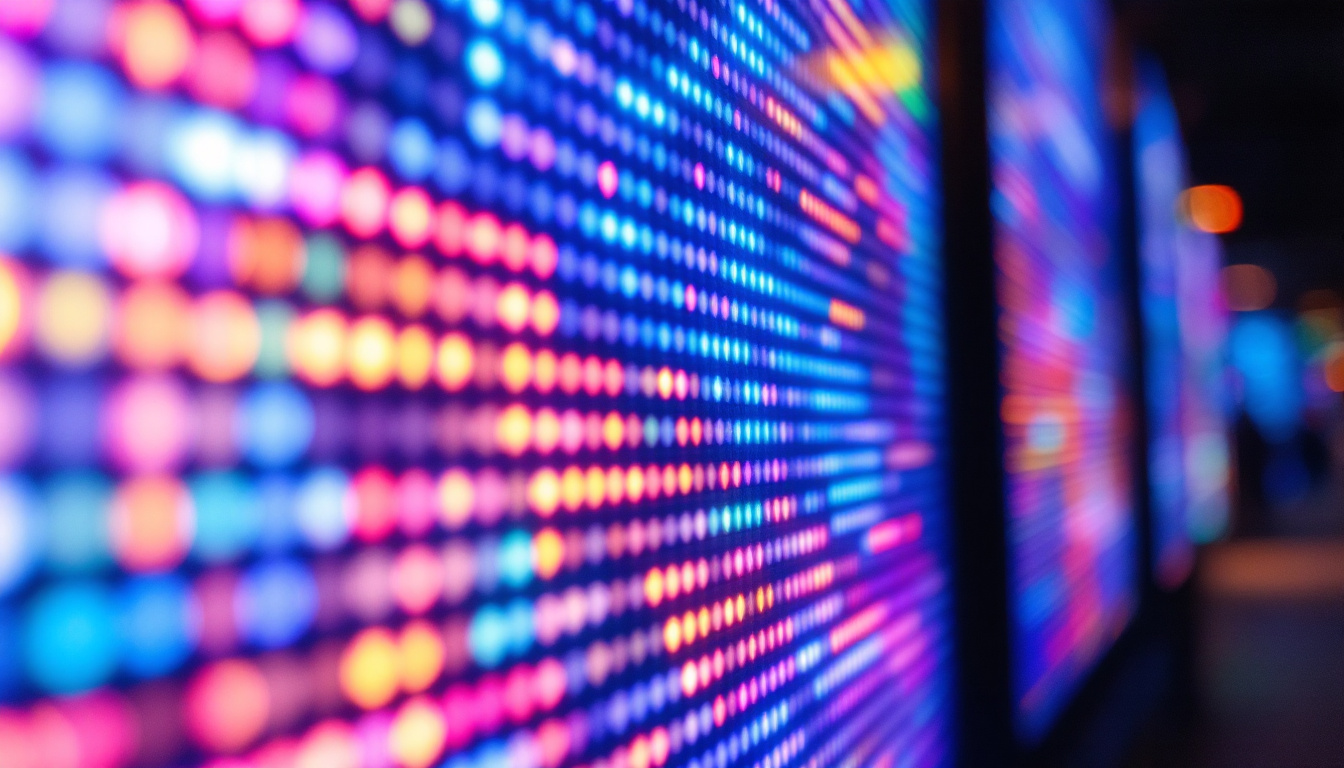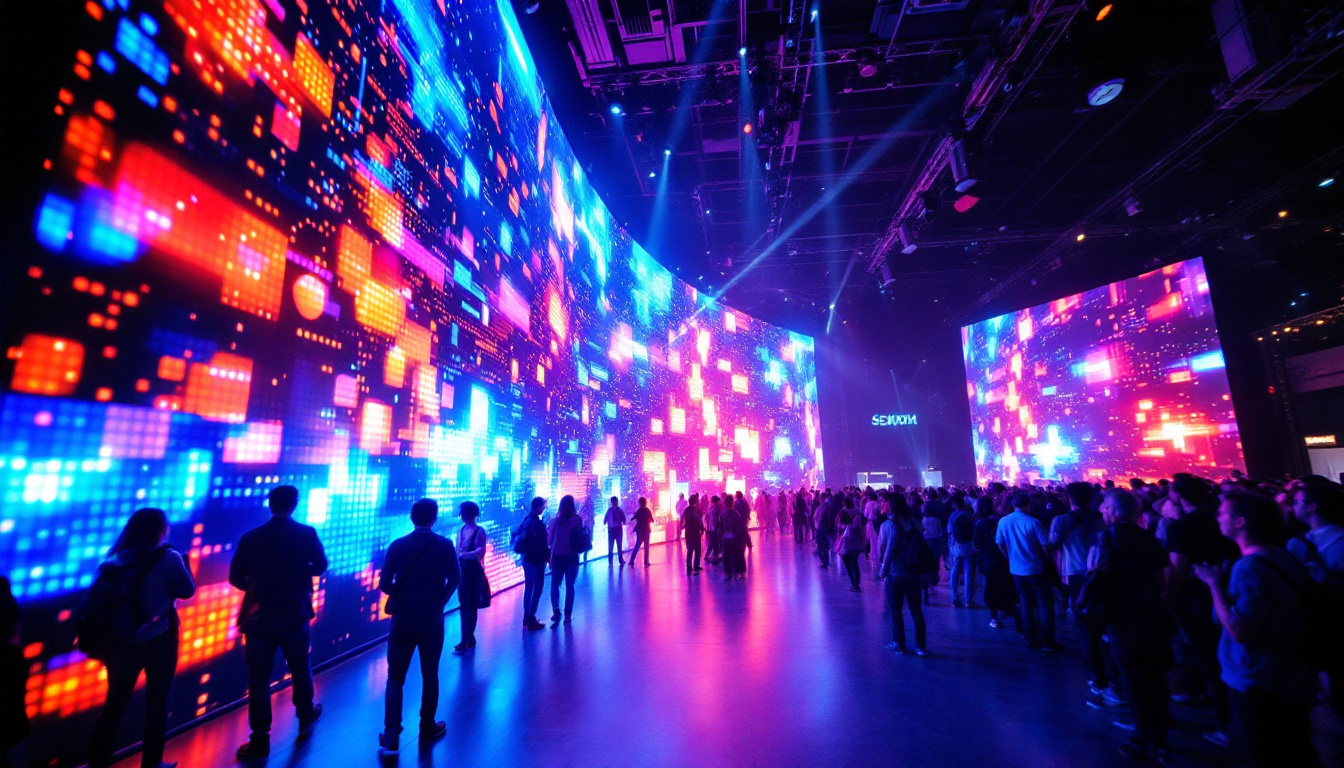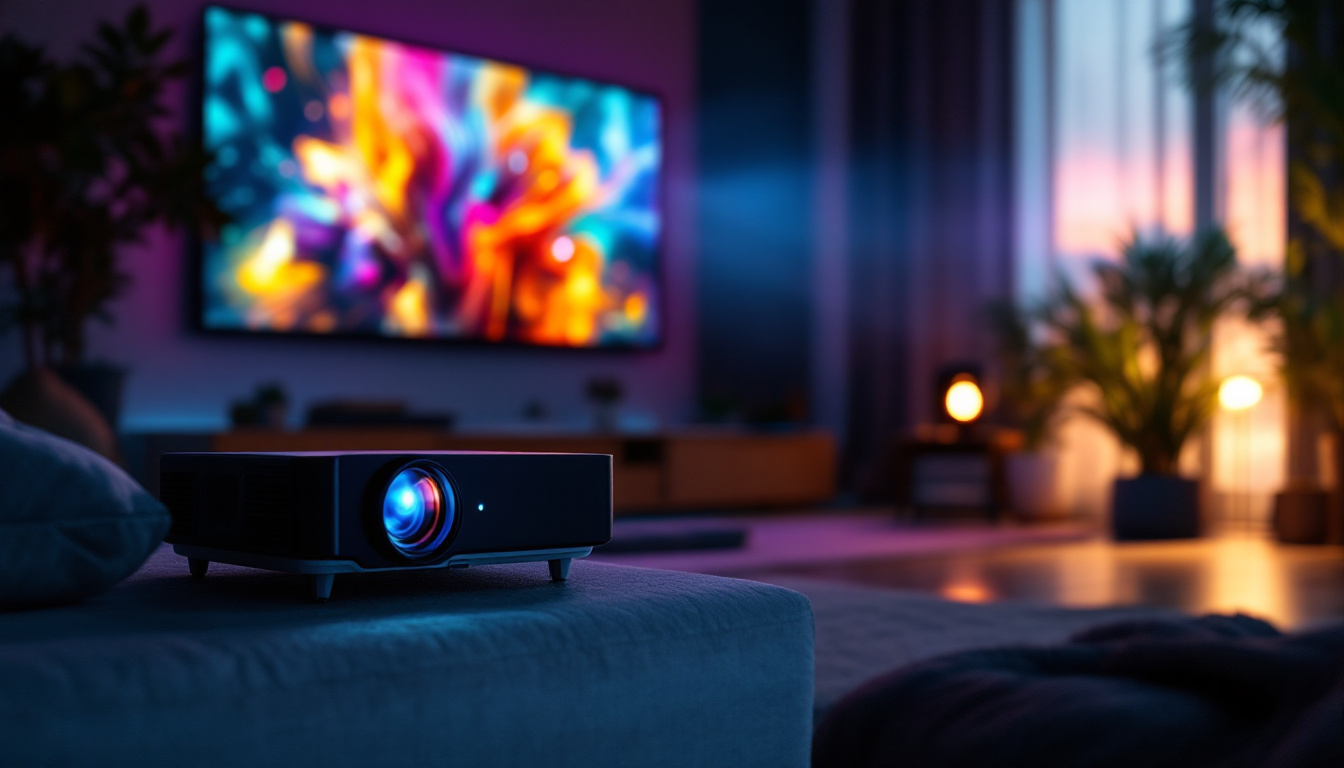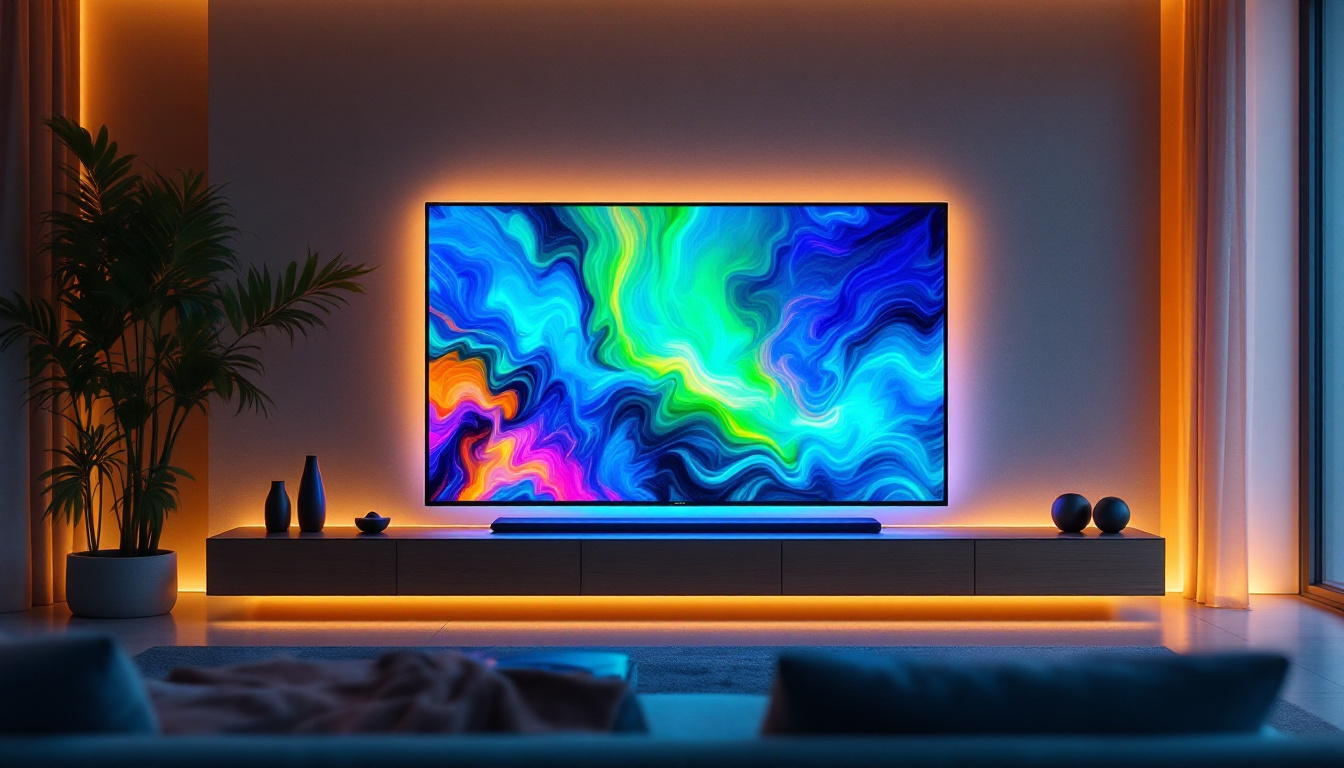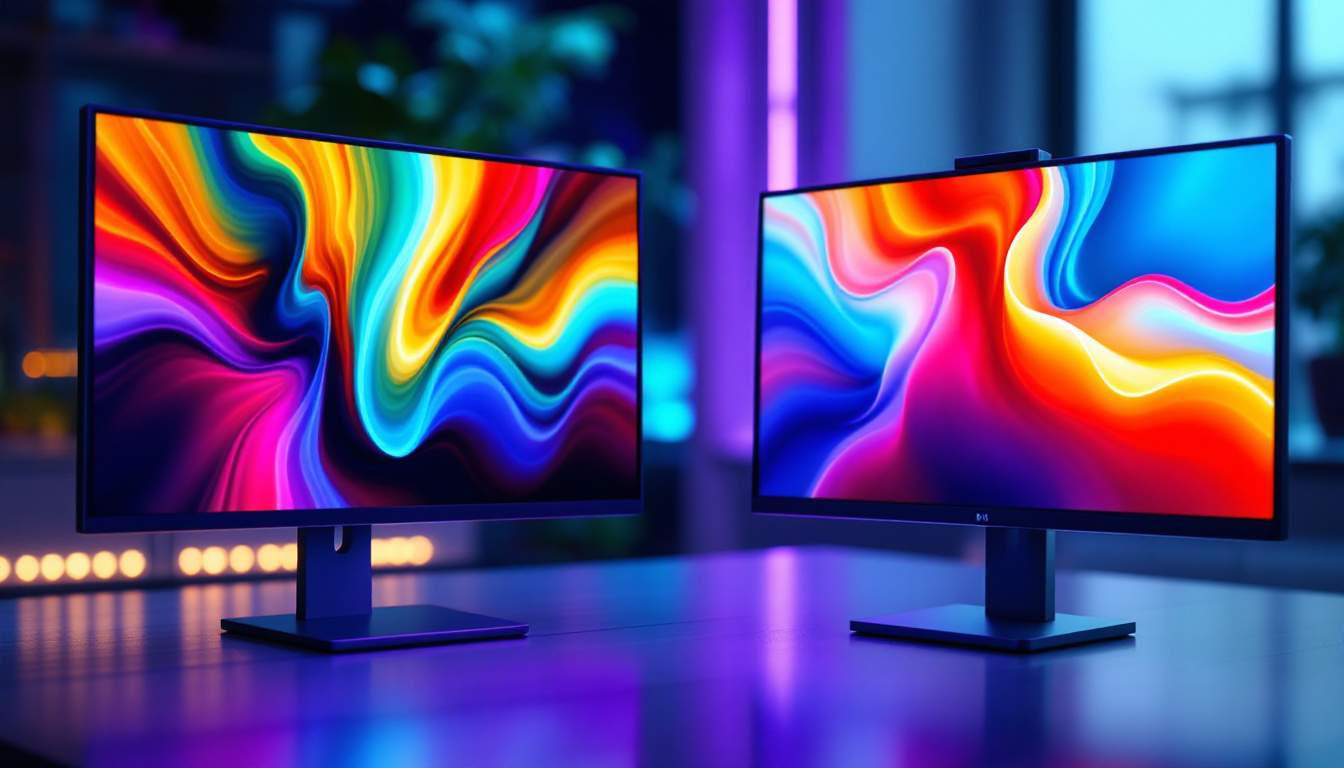In the digital age, the way brands communicate visually has evolved dramatically. One of the most striking developments is the use of pixelated logos on LED displays. This article delves into what pixelated logos are, how LED displays function, and the various applications of this technology in modern branding.
Understanding Pixelated Logos
Pixelated logos are designs that utilize a grid of small squares or pixels to create an image or text. This style harkens back to early computer graphics, where resolution limitations forced designers to think in terms of pixels. Today, pixelation has become a trendy aesthetic, particularly in digital media.
The Aesthetic Appeal
The visual appeal of pixelated logos lies in their retro charm and simplicity. They evoke nostalgia for the early days of computing and gaming, making them particularly attractive to brands targeting a younger, tech-savvy audience. This aesthetic can be both playful and sophisticated, depending on how it is executed. Designers often play with color palettes reminiscent of 8-bit graphics, using vibrant hues that can evoke a sense of fun and creativity. The blocky nature of pixelated designs allows for a certain level of abstraction, enabling brands to convey complex ideas in a straightforward manner that resonates with audiences.
Brand Recognition
Pixelated logos can enhance brand recognition. The unique design stands out in a crowded market, making it easier for consumers to remember a brand. When used effectively on LED displays, these logos can capture attention quickly, which is crucial in environments where consumers are bombarded with visual stimuli. Furthermore, the adaptability of pixelated logos across various media—from websites to merchandise—ensures consistency in branding. As brands increasingly seek to differentiate themselves in the digital landscape, the pixelated logo serves as a versatile tool that can be easily scaled and modified without losing its identity.
The Cultural Impact
Beyond aesthetics and recognition, pixelated logos also reflect a broader cultural movement that embraces retro technology and digital art. This resurgence can be seen in various creative fields, from fashion to music, where pixel art is celebrated for its unique style and historical significance. Brands that adopt pixelated logos often align themselves with this cultural zeitgeist, appealing to consumers who appreciate the intersection of nostalgia and modernity. Additionally, the rise of indie games and retro gaming culture has further solidified the pixelated style as a symbol of creativity and innovation, making it a popular choice for startups and tech companies looking to convey a sense of authenticity and originality.
The Technology Behind LED Displays
LED (Light Emitting Diode) displays have revolutionized the way information is presented visually. Unlike traditional displays, LED technology offers brighter, more vibrant colors and greater energy efficiency. Understanding how these displays work is essential for appreciating their role in showcasing pixelated logos.
How LED Displays Work
LED displays consist of numerous tiny diodes that emit light when an electric current passes through them. These diodes are arranged in a grid, allowing for the creation of images and animations. The brightness and color of each pixel can be controlled individually, enabling a wide range of visual effects. This pixel-level control is what makes LED displays particularly appealing for dynamic content, such as video advertisements or live event broadcasts, where clarity and vibrancy are paramount.
Moreover, the technology behind LED displays has evolved significantly over the years. Modern LED displays often incorporate advanced techniques like pulse-width modulation (PWM) to adjust brightness levels without affecting color accuracy. This means that even at lower brightness settings, the colors remain rich and true to life, enhancing the viewer’s experience. Additionally, the integration of smart technology allows for real-time content updates and remote management, making LED displays a versatile choice for businesses and event organizers alike.
Advantages of LED Technology
One of the primary advantages of LED displays is their brightness. They can be easily viewed in various lighting conditions, making them ideal for outdoor advertising. Additionally, LED displays are energy-efficient, consuming less power than traditional light sources. This efficiency not only reduces operational costs but also minimizes environmental impact. Furthermore, LED technology has a longer lifespan compared to conventional displays, often lasting tens of thousands of hours, which translates to lower maintenance and replacement costs over time.
Another significant advantage is their durability. LED displays are built to withstand harsh weather conditions, which is particularly beneficial for outdoor installations. Unlike LCD screens that can be damaged by moisture, LED displays are often encased in robust housings that protect them from rain, wind, and extreme temperatures. This resilience ensures that businesses can maintain a consistent visual presence without the frequent interruptions that come with traditional display failures. As a result, LED technology is not just a smart investment for immediate visual impact, but also a long-term solution for reliable advertising and information dissemination.
Applications of Pixelated Logos on LED Displays
Pixelated logos are increasingly being used in various applications, from advertising to event displays. Their versatility makes them suitable for a wide range of industries, enhancing brand visibility and engagement.
Advertising and Marketing
In the realm of advertising, pixelated logos on LED displays can create eye-catching campaigns. Brands can use dynamic animations to draw attention to their logos, making them memorable. This approach is particularly effective in high-traffic areas, such as shopping malls and city centers, where competition for consumer attention is fierce. The pixelated design allows for a modern aesthetic that resonates with younger audiences, who often appreciate the retro feel of pixel art. Furthermore, the adaptability of these logos means they can be easily modified for seasonal promotions or special events, keeping the brand fresh in the minds of consumers.
Events and Exhibitions
At trade shows and exhibitions, pixelated logos can serve as focal points for brand identity. Large LED displays can showcase logos alongside promotional content, creating an immersive experience for attendees. The ability to change content quickly allows brands to adapt their messaging in real-time, responding to audience engagement. This flexibility is particularly beneficial during live events, where brands can highlight specific products or services based on the interests of the crowd. Additionally, the vibrant colors and sharp contrasts of pixelated logos on LED screens can enhance visibility from a distance, ensuring that even those at the back of a crowded hall can easily recognize the brand.
Social Media Integration
With the rise of social media, brands are increasingly integrating their pixelated logos into their digital marketing strategies. LED displays can be programmed to display real-time social media feeds, showcasing user-generated content alongside the brand’s logo. This not only enhances engagement but also fosters a sense of community among consumers. By displaying hashtags or encouraging users to share their experiences, brands can create a two-way dialogue that strengthens customer loyalty. Moreover, the pixelated logos can be animated to reflect trending topics or campaigns, making them more relevant and appealing to the audience. This level of interaction not only boosts brand visibility but also encourages consumers to become active participants in the brand’s narrative, further amplifying its reach through shares and likes across various platforms.
Design Considerations for Pixelated Logos
Creating an effective pixelated logo requires careful consideration of various design elements. From color selection to pixel density, each aspect plays a crucial role in the final outcome.
Color Selection
Color is a fundamental aspect of any logo design. For pixelated logos, choosing a limited color palette can enhance clarity and recognition. Bright, contrasting colors tend to perform well on LED displays, as they stand out against the backdrop and catch the viewer’s eye.
Pixel Density
Pixel density refers to the number of pixels used in the logo design. A higher pixel density allows for more detail, but it can also complicate the design. Striking a balance between simplicity and detail is essential, especially when the logo will be displayed on varying screen sizes.
Challenges of Using Pixelated Logos on LED Displays
While pixelated logos offer numerous benefits, there are also challenges associated with their use on LED displays. Understanding these challenges can help brands navigate potential pitfalls and optimize their visual communication strategies.
Resolution Limitations
One of the primary challenges with pixelated logos is resolution. If the logo is not designed with the display’s resolution in mind, it may appear blurry or distorted. It is crucial to create a logo that can scale effectively across different display sizes without losing its integrity.
Environmental Factors
Outdoor LED displays are subject to various environmental factors, such as sunlight and weather conditions. These factors can affect the visibility and longevity of pixelated logos. Brands must consider these elements when designing their logos and choosing display locations to ensure optimal performance.
The Future of Pixelated Logos and LED Displays
The future of pixelated logos and LED displays is promising, with advancements in technology and design trends continually evolving. As brands seek innovative ways to engage consumers, pixelated logos are likely to remain a popular choice.
Emerging Technologies
As technology advances, new display methods such as flexible LED screens and augmented reality (AR) are becoming more prevalent. These innovations could further enhance the way pixelated logos are presented, allowing for more interactive and immersive experiences.
Trends in Branding
Branding trends are shifting towards minimalism and authenticity. Pixelated logos fit well within this trend, as they often convey a sense of honesty and simplicity. As consumers increasingly seek brands that resonate with their values, pixelated logos may become a staple in the branding toolkit.
Conclusion
Pixelated logos on LED displays represent a unique intersection of technology and design. They offer brands a way to stand out in a competitive landscape while appealing to the nostalgia of consumers. As LED technology continues to evolve, the potential for pixelated logos will only grow, making them an exciting element of modern branding strategies.
Incorporating pixelated logos into marketing campaigns, events, and social media can enhance brand visibility and engagement. By understanding the technology behind LED displays and the design considerations necessary for effective pixelation, brands can leverage this trend to create memorable visual identities. The future is bright for pixelated logos, and their role in the digital landscape is poised to expand even further.
Explore Cutting-Edge LED Displays with LumenMatrix
Ready to elevate your brand’s visual impact and captivate your audience with stunning pixelated logos? LumenMatrix is at the forefront of LED display innovation, offering a diverse range of solutions tailored to bring your brand’s message to life. From vibrant Indoor and Outdoor LED Wall Displays to dynamic Vehicle and Sports LED Displays, our technology is designed to create immersive experiences that resonate with viewers. Discover the transformative power of our LED Poster Displays, Floor LED Displays, Custom LED Displays, All-in-One LED Displays, and LED Transparent Displays. Embrace the future of visual communication with LumenMatrix and make a lasting impression. Check out LumenMatrix LED Display Solutions today and see how we can help you share your story with brilliance and precision.

